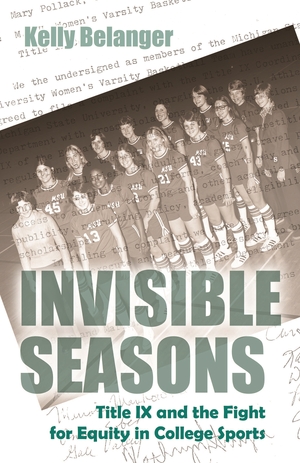"Modern Women and Sports in Interwar Chicago: 1918-1941 contains a remarkable amount of intriguing information about women's athletics in Chicago during an important and often-overlooked period of women's sports history."—Rita Liberti, author of (Re)presenting Wilma Rudolph
"[Modern Women and Sports in Interwar Chicago] sheds light for the very first time, on a number of female athletes whose athletic achievements have, up until this writing, been lost to history. . . . Chicago, at the early decades of the twentieth century offers rich potential to understand subjective spaces around race, gender, ethnicity, class, and sexuality amid the many tensions and issues connected to modernity."—Pamela Grundy, historian and author of Shattering the Glass: The Remarkable History of Women's Basketball
Description
Between World War I and World War II, women flocked to Chicago’s parks, playgrounds, and clubs, becoming enthusiastic participants, players, and fans of the games of the time. Robert Pruter’s Modern Women and Sports in Interwar Chicago; 1918–1941, examines how the Windy City became home to advancements in women’s track and field, swimming, basketball, golf, speed skating, and softball. As a work of sport and urban history, Pruter’s text situates the vibrant world of women’s athletics within the context of interwar Chicago’s new infrastructure and support from its religious and cultural institutions, newspapers, and industrial and retail firms.
Woven into this historical analysis are biographies of individual athletes, including Edith Cummings, the 1920s golf star who inspired F. Scott Fitzgerald, and Tidye Pickett, the first African American woman to compete in the Olympic Games. Modern Women and Sports in Interwar Chicago provides a detailed look at developments in the city, the rise of women’s sporting culture, and the lives and social contexts of the athletes who navigated gender norms while embracing more inclusive recreation and competition.
Table of Contents
PART I. 1920S: THE RISE OF MODERN ATHLETIC WOMEN
Chapter 1. Introduction: Modern Chicago Ready to Develop Women’s Sports
Chapter 2. Parks and Playgrounds: Core Foundation of Chicago’s Women Sports
Chapter 3. Competitive Swimming for Women: From Birth to Olympic Glory
Chapter 4. Chicago in Forefront of Women’s Track and Field
Chapter 5. “Not Playing Like an Animated Checker”: Chicago Women’s Basketball in the Golden Age of Sports
Chapter 6. Chicago Becomes a Major Center for Women’s Golf
Chapter 7. Women’s Speed Skating Emerges from Norwegian Winter Games
Chapter 8. African American Women Develop Their Own World of Sports
PART II: Chicago Women's Sports Thrive during the Great Depression
Chapter 9. Women Swimmers Rise to the Top
Chapter 10. Women’s Track and Field Prospers in the Depths of the Depression
Chapter 11. Women's Basketball of the 1930s Sustained by Newspaper Support
Chapter 12. Chicago Women’s Golf Becomes More Democratic
Chapter 13. Women’s Speed Skating in the Depression Years
Chapter 14. Chicago and the Development of Modern Women’s Softball
Chapter 15. African American Sports for Women Grow in the Great Depression
Afterword
Bibliography
Index
About the Author
Robert Pruter is an independent scholar in both popular music history and in sport history. He is the author of His Chicago Soul, Doowop: The Chicago Scene, and The Rise of American High School Sports and the Search for Control: 1880-1930.
Related Interest
January 2025




